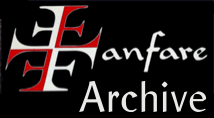Review by Jerry Dubins
RACHMANINOFF Études tableaux, op. 33: in g; in c♯. 6 Moments musicaux: op. 16: No. 4 in e. SCRIABIN Piano Sonata No. 2 in g♯, op. 19. 24 Preludes for Piano, op. 11: No. 11 in B. SCHUMANN Carnaval, op. 9 • Kyra Xuerong Zhao (pn) • ALBANY 1952 (53:16)
With an album titled Vibrant, Kyra Xuerong Zhao makes her recorded debut and first appearance in Fanfare. After early study in China, Kyra took her advanced training in the States, earning her Doctor of Musical Arts degree from Boston University, an Artist Diploma degree from Yale University, and Master’s and Bachelor’s degrees from Mannes School of Music. According to her webpage, Zhao has performed solo, concerto, and chamber concerts in some of the most prestigious halls in the world, including Carnegie Hall, Lincoln Center Stage, Seiji Ozawa Hall, Koussevitzky Music Shed, Benaroya Hall, Horvitz Auditorium, Rockport Music Performance Center, Steinway Hall, and Beijing Concert Hall. Besides her active performing career, “Dr. Zhao is a devoted educator, having served as a piano teaching assistant at Yale University and Boston University for graduate studies. She is currently on the piano faculty at New England Conservatory of Music Pre-College and Powers Music School.”
Her newly recorded solo recital is—it goes without saying—a technically and musically challenging one for the pianist, but some listeners may find it a bit challenging as well, which can be a good thing. In mixed programs like this, one of the things I look for is a common thread which, in some way, ties together the works the artist has chosen to play. Here we could say, “Well, Scriabin and Rachmaninoff were both Russians,” but considering the very different paths their careers took and the different directions in which their music went, the fact that they were born into the same country and culture doesn’t seem to make for a very strong connection between them. And then, of course, there’s Schumann, who’s in a different orbit altogether. The more I considered this mix of pieces, the more it became clear to me that the common thread was that of Romantic fantasy. I think that’s what Zhao had in mind when she gathered these pieces together under an album title of Vibrant.
On two separate occasions, Rachmaninoff tossed off a set of enigmatically titled piano pieces he called Études tableaux (Study Pictures), leading us to believe that they were of some undisclosed programmatic content which he would leave to the listener to discover. The first set, from which Zhao gives us the last two numbers, was composed in 1911. The real mystery here is not what mental picture Rachmaninoff had in mind for each of these pieces, but why Zhao’s album content listing has a No. 9 in a set of only eight numbers. The answer to that falls somewhere between the composer’s bench and the publisher’s desk. An Etude in A Minor was dislodged from the original set of nine and went to live in the op. 39 set of Études tableaux.
But that wasn’t the end of it. Several of the remaining eight numbers of op. 33 ended up being renumbered, due to the fact that they weren’t all published together, or even, in some cases, in Rachmaninoff’s lifetime. The G-Minor Etude here played by Zhao, originally No. 8 in the set, was published as No. 5, and after the A-Minor Etude was evicted, No. 8 became No. 7. The final Etude in the set, the C♯-Minor, was originally No. 9, as it’s identified in Zhao’s album. It was published as No. 6, and following the eviction of the A-Minor, it became No. 7. Since no keys are duplicated, it’s probably best to refer to each Etude by its key—which is what I’ve done in the above headnote—as opposed to its number to avoid confusion in the ways different sources number them. No matter how one numbers them, the two Etudes performed by Zhao are the last two in the op. 33 set, and her playing of them is pure poetry.
The G-Minor Etude, despite some of its Impressionistic-sounding harmonies, is almost something I could imagine Schubert writing, had he lived another 75 years or so. The mournfulness of it, and especially the explosive anger and agitation of the piece’s central section, reminds me of the Andantino movement from Schubert’s A-Major Sonata, D 959.
The C♯-Minor Etude, a dramatically turbulent study seems to echo Chopin. There’s even an almost direct quotation of the main theme in the first movement of Chopin’s “Funeral March” Sonata in B♭ Minor. Zhao doesn’t hold back. She unleashes a fearsome tempest that demands of her Steinway Model D everything it’s got and then some. One marvels at the strength in Zhao’s hands and arms to draw such power from the piano. It’s quite exhilarating, yet at the same time, a little scary.
From Rachmaninoff’s six Moments musicaux, op. 16, Zhao gives us the fourth number in the set. It’s in E Minor, marked Presto, and, according to Zhao’s self-authored album note, “It’s considered one of his most virtuosic piano solos.” The Moments are earlier than the Études tableaux. In fact, they’re among the earliest of Rachmaninoff’s published pieces. He was 23 in 1896 when he wrote them. In a compact 67 measures, which Zhao makes work of in just under three minutes, the E-Minor number is a minefield of “runs that never stop” and passagework that pits the left hand against the right in a dazzling display of pianistic acrobatics. It’s believed that Rachmaninoff’s inspiration for this Presto was Chopin’s Revolutionary Étude, to which it evidences some similarities.
In his later, essentially atonal, piano pieces, Scriabin’s music can make for difficult listening. But his G♯-Minor Piano Sonata, composed in 1897, is not one of those works. In keeping with what I said above about Zhao’s program being rooted in the idea of Romantic fantasy, it’s noteworthy that Scriabin’s op. 19 carries an alternate title of Sonata-Fantasy. For much of this two-movement sonata, Scriabin is still largely in his earlier Chopin mode, though the harmonies are showing signs of tonality losing its grip, and the keyboard figurations evidence an awareness of Debussy and Impressionism. It’s not surprising, however, that this is one of Scriabin’s easier pieces to listen to and one of his most popular. That said, listening to it and playing it are two different things, and this is not easy music to play. Zhao brings out its bell-like sonorities and the supple fluency of its most Romantically-tinged passages. Really beautiful, and for those who may be put off by the composer’s later solo piano works, this sonata and Zhao’s playing of it are sure to cast Scriabin in a different light for you.
Even more gorgeous than the sonata is Scriabin’s barely two-minute-long Prelude in B Major, the 11th number in his 24 Preludes, op. 11. At the outset of this review, as I sought a connection between the pieces on Zhao’s program, I settled on the idea of “Romantic fantasy.” Having reached this point in her recital, I’ve begun wondering if there’s not another connection, and one that’s quite obvious, Chopin. In these early works by Rachmaninoff and Scriabin, it’s clear that both composers were inspired by and strongly influenced by the piano music of Chopin. While one shouldn’t find that too surprising—Chopin, after all, was the revolutionary of the piano for the first half of the 19th century—what does surprise me a bit is that Rachmaninoff and Scriabin, with their strong leanings towards a new and even more extravagant virtuosity, seem not to have been as influenced by Liszt, the revolutionary of the piano in the second half of the 19th century, and to whom both Rachmaninoff and Scriabin were closer in time.
What got me to thinking about this was Scriabin’s B-Major Prelude, for it turns out that it is one of the preludes in the 24 major and minor keys that follows the exact same major-key/relative-minor-key progression around the Circle of Fifths laid out in Chopin’s Preludes, op. 28. This is such an incredibly beautiful piece, and it’s so expressively played by Zhao, I wonder if she might be persuaded to record the entire cycle.
Finally, we come to Schumann’s Carnaval, by default the major work on the disc. As I’ve had occasion to observe in the past, Schumann was very successful at creating larger, longer-playing works by stringing together small-scale pieces. Carnaval is such a work, perhaps the composer’s finest that’s modeled on the process of accretion.
Here is where the theme of Romantic fantasy really comes to the fore, for indeed, the entire work is based on musical depictions of commedia dell’arte characters (Arlequin, Columbine, Pantalone, and Pierrot), Schumann’s imaginary alter-egos (Eusebius and Florestan), notational anagrams (A-S-C-H / S-C-H-A), and a number of other characters, real, romanticized, and/or idealized.
Paganini takes a bow in the 17th number of Carnaval, and in the 12th number, Schumann, like Rachmaninoff and Scriabin much later, pays tribute to Chopin. Ironically, Chopin held Schumann in low esteem and “is reported to have said that Carnaval was not music at all” [Frederick Niecks, Frédéric Chopin as Man and Musician, Volume 2, BiblioLife, 2008], which is almost as bad as Rossini’s response to what he thought of Berlioz’s Symphonie fantastique. Replied Rossini, “It’s a good thing it’s not music.”
Kyra Xuerong Zhao has set herself a very serious challenge, both technically and interpretively, in this program of piano pieces that require the highest degree of virtuosity and musicality. And she meets every test head-on with confidence, flawless execution, beauty of tone, and an emotional sensitivity that finds just the right balance in each piece between bravura and poetry. I hope to hear much more from this exceptionally talented artist, and recommend this, her debut recording, without reservation. Jerry Dubins






















